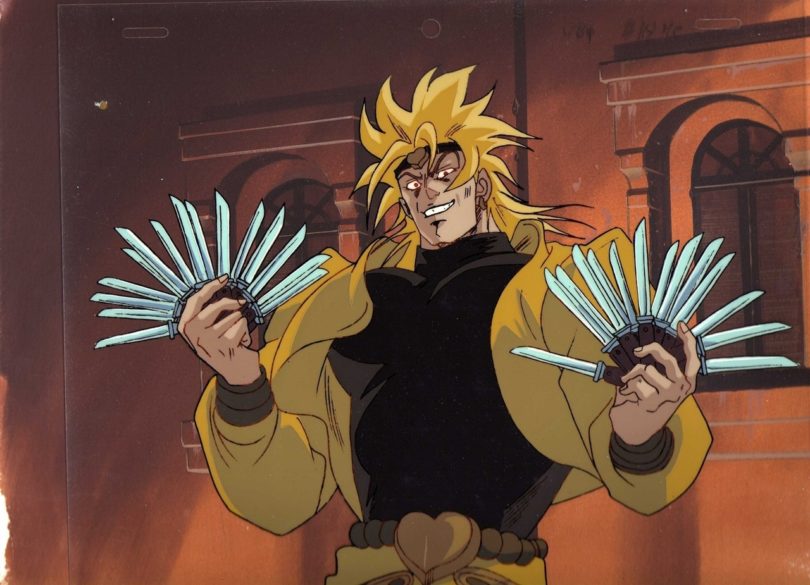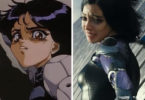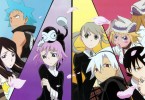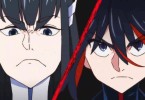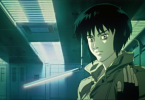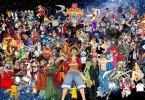David Production’s Jojo’s Bizarre Adventure: Stardust Crusaders (2014–2015) is a consummate depiction of Hirohiko Araki’s ostentatious style and unique take on the testosterone-laced action film culture of the 1980s. Soon after its completion, however, the renewed interest in Stardust Crusaders brought with it a re-evaluation of Studio A.P.P.P.’s prior adaptation—inevitably, comparisons were drawn.
Predictably, fans often pose a dubious question to one another: Which one is better? Obviously this falls within the realm of subjective tastes, but most fans seem to prefer the newer iteration. While this result comes as little surprise, I’ve noticed that the sole crux of most arguments in favor of the TV series boils down to one elusive concept: faithfulness.
Clearly the televised rendition of Stardust Crusaders is more comprehensive than the OVA in relation to the manga. But why should this be the dominant criterion when evaluating an anime? It is not one on the merits of filmmaking—shot composition, editing techniques, or mise-en-scène—nor even on the more rudimentary elements of narrative—such as pacing, characterization, and thematic elements. In reality, judging the worth of a particular anime based purely on its likeness to the very distinctive qualities of manga is a form of dogma. The oeuvre of any given published author is regularly venerated as doctrine, the holy canon of its respective fandom. For many, any aberration from the template is not only undesirable, but tantamount to outright heresy.
This is every individual’s own prerogative, of course. I am not going on a diatribe against anyone who prefers that an anime take after its parent material to the letter. (I quite enjoyed Fullmetal Alchemist: Brotherhood (2009–2010) precisely because it adhered to Hiromu Arakawa’s creative vision, but I digress.) But speaking of letters (idiomatic or otherwise), let’s steer things in another direction: exposition.
In a manner not unlike the abilities of Dio’s Stand, one of the marvelous properties of reading is the profound effect it has on our sense of time. A passage of text can be read faster in one’s own head than aloud, thus we are able to receive and process information in our brains that much more efficiently than through, say, oral recitation. Beyond this pragmatic aspect, reading is extremely conducive to exercising the imagination. When it comes to exposition (descriptions and explanations that are stated plainly), our suspension of disbelief is generally more pliable when we are engrossed in an exciting read than when hearing the exact same words spoken by an actor. This malleability of time, however, can only be stretched so far on screen, where runtime is an unavoidable factor in the storytelling process.
The ample exposition in most manga serves one function: to convey information, either in the form of supplementary explanation of the action or the inner feelings of a character. With regards to action, there is only so much that can be conveyed in a singular panel or comic strip. Thus ancillary data that would otherwise sound clunky if spoken out loud (the protagonist painstakingly describing the movements of an opponent, for example) serves a purpose; yet, for reasons previously stated, it does not detract from the overall reading experience. It is another matter entirely when translating these descriptors to the screen.
As for the second prong of exposition’s function, an unanimated drawing can only show so much; it is therefore useful to have moments of inner monologue so that readers can ascertain key bits of a character’s consciousness. Verisimilitude has not been violated because we implicitly understand that no matter how lengthy a character’s thought bubble may be on the printed page, it does not necessarily bear any relation to how much time has actually passed in the outside world. After all, a million thoughts can race through the human mind in an instant during periods of stress.
With the subtlety and nuance afforded through animation, these functions are seldom needed and, in fact, are frequently overused. In such scenarios, this heavy-handed approach severely limits the potential of the moving image. As a colleague of mine once put it, consequently we are often left with “animated manga” rather than anime.
In the case of the Jojo’s OVA, it is usually derided for being too short—a valid opinion, to be sure. But budgetary concerns aside, directors like Hiroyuki Kitakubo (Angel Cop, Black Magic M-66) must always be concerned with balancing exhibition and exposition in ways fundamentally different than writers. Even within the unorthodox runtime of the OVA format, filmmakers of all stripes have to figuratively trim the fat of source material in order to simultaneously create an accompanying tie-in product and a legitimate standalone work of cinema.
Consider the fight with Vanilla Ice: in the TV series, we are treated to an exact duplication of the various corresponding manga chapters. However, as with numerous other instances within the series, many viewers with whom I have spoken can’t help but feel that, at times, Polnareff’s inner monologue is too verbose. Such in-depth exposition may make Polnareff’s dread palpable in the manga, but when his capable seiyuu has to read every single ephemeral thought aloud it loses some of its impact and risks becoming irritating. And the camera direction, though competently executed, serves primarily to mimic the paneling of the page rather than utilize exclusively cinematographic conventions.
Contrast the analogous sequences of the 1990s version, where a quick rack focus accentuates Vanilla Ice’s ominous approach. In a shot/reverse shot pattern, we can see the fear and anger burning behind Polnareff’s eyes as the villain carries on with his egotistical boasting: from a utilitarian standpoint, we don’t need to literally hear what Polnareff is thinking not only because his body language already conveys it, but because instantaneous thoughts rendered as audible utterances can cause timing discrepancies with onscreen action. Shortly thereafter, Polnareff takes advantage of Vanilla Ice’s lapse in concentration caused by Iggy and angrily stabs him to death with Silver Chariot. As this last minion of Dio dies, Polnareff is able to satisfyingly deliver his “go to hell” sendoff from the manga. Kitakubo has simultaneously given us an action-film staple and, arguably, a justifiable interpretation of Araki’s vision.
In closing, I am certainly not suggesting that the OVA of Jojo’s Bizarre Adventure is superior to the TV series. But with the prevalence of wikis and the modern ubiquity of information, I wonder how far the pendulum will swing in the direction of stringent reproductions versus adaptations concerning other titles in the world of anime and manga. Due to the advent of the internet, producers no longer market to the lowest common denominator, i.e. those unfamiliar with a franchise—they cater to the super fans, meaning no proverbial stone (however inconsequential) can remain unturned.
Is this good or bad? Is such an approach desirable or despicable? I’ll let people decide for themselves. As a fan, I am glad that Stardust Crusaders has been animated in its entirety, and I also find it exciting that other series may one day receive such treatment. As a film critic, however, I hope that such prospects do not portend the decline of Japanese animations that can stand on their own as cinematographic creations independent of their serialized counterparts.
© 2017

